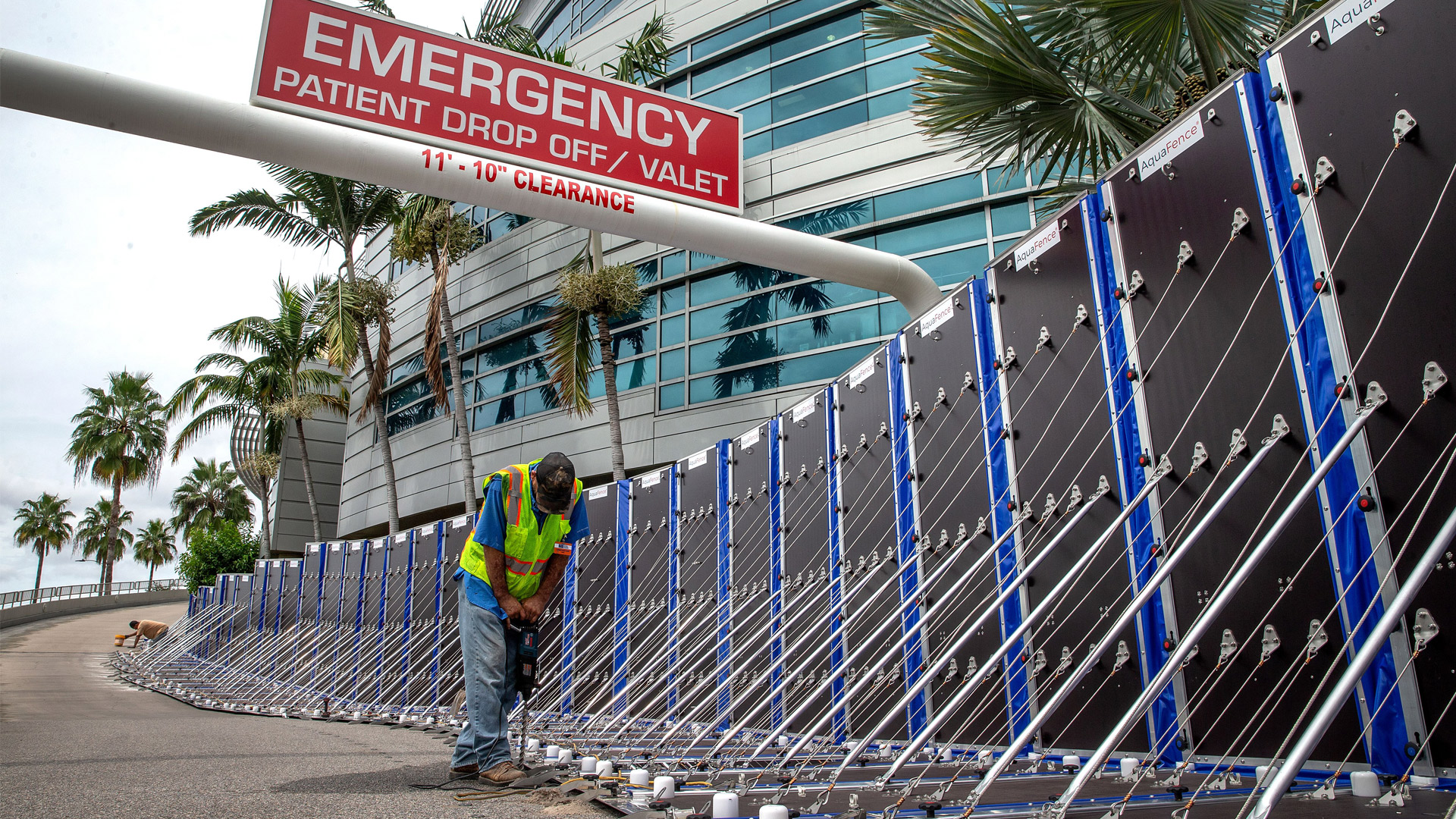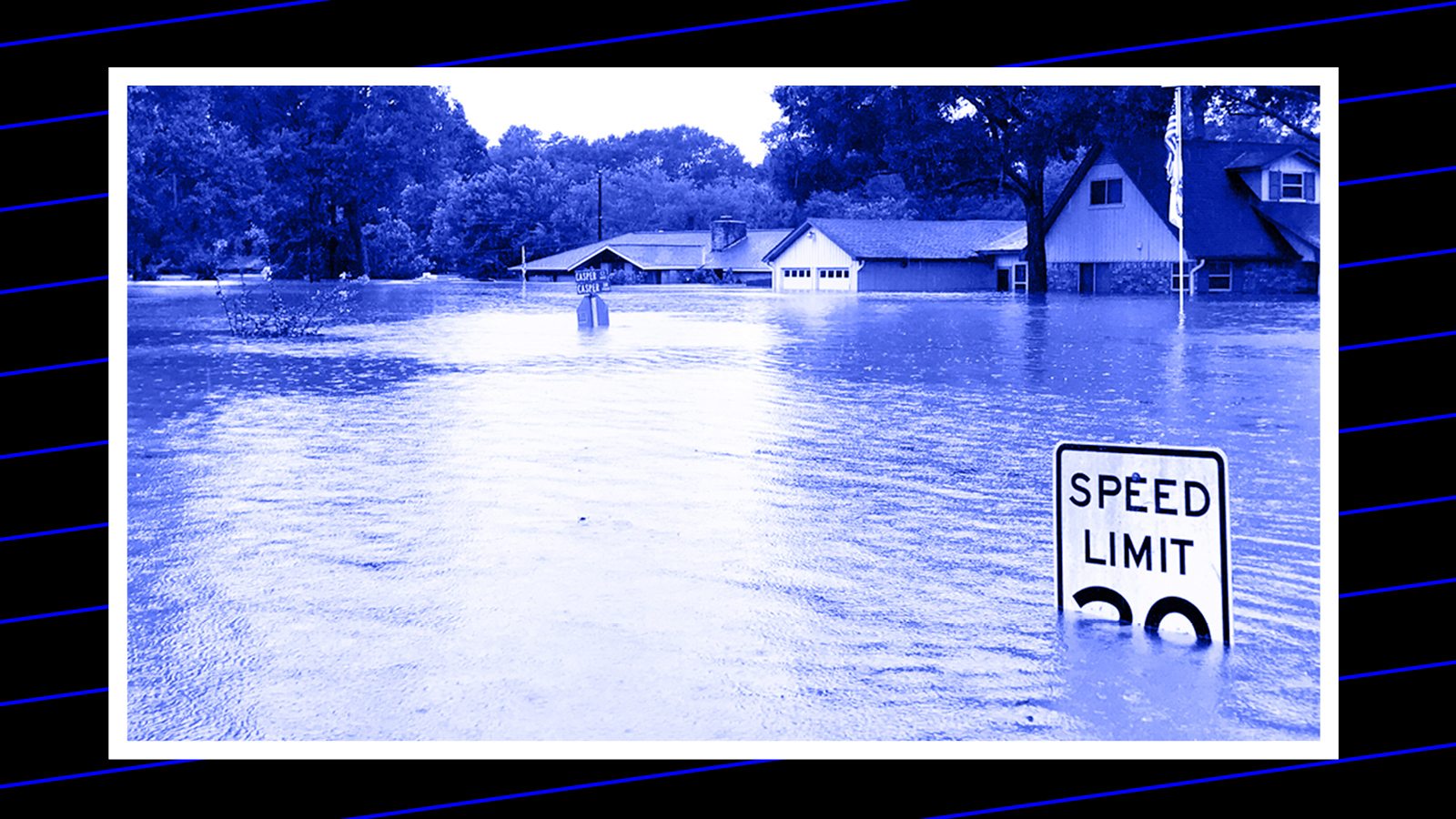
Global climate change has contributed to an increase in extreme weather events, from heatwaves and droughts to unusual storm patterns dumping huge deluges of rain and creating widespread floods.
Even the Sahara Desert and hotter countries such as Saudi Arabia have suffered sustained flooding in recent years.
There is little chance of controlling the weather, so what can we do to protect our homes and infrastructure? A mini-industry in staving off floodwater has grown over the past couple of decades, offering solutions that are a step up from sandbags in doorways.
The months of misery and expense of dealing with a flood is devastating – even water that rises a few centimetres above the threshold of a doorway is enough to cause terrible damage. Anyone who has experienced it once – or even had a close shave with rising water – will seriously consider investing in the means of stopping it happening a second time.
Ian Gibbs MRICS is national technical manager at Sedgwick International UK, and chair of the DEFRA Flood Resilience Roundtable. He says that while loss adjustors and surveyors have always expected the increased flooding associated with winter storms, they must now be prepared for flooding throughout the year caused by intense rainfall events. As must the homeowners, regardless of whether they live by a river or the coast.
“What insurers are looking for from flood resilience measures is not just a theoretical reduction in risk, but confidence that any measures installed will be effective,” says Gibbs.
“Historically, there has been a desire to use resistance measures (intended to reduce or stop water entry), such as flood doors and flood barriers and non-return valves. However, there is a greater acceptance that recoverability measures (where the property recovers quicker when water enters as there is less strip out) are becoming more mainstream as it requires no intervention or maintenance.”
Whether it’s flood prevention, resilience or recovery, what are the devices that could stop individual homes or even entire neighbourhoods from being washed out?

Workers install a flood barrier to secure Tampa General Hospital in anticipation of Hurricane Ian, in Tampa, Florida, USA, 27 September 2022.
Mobile flood barriers
There are now a range of flood defences that can all be used in a roughly similar way: lightweight, quickly mobilised fences and barriers that fit together to block floodwater from reaching a particular building or area.
Although the panels themselves can be thin, they use the weight of the water itself to reinforce the fence, making them very difficult to breach. These sorts of defences are all reusable as well which makes the initial outlay more palatable (Boxwall starts at £150 per linear metre, for example).
Aquafence dramatically kept Florida’s Tampa General Hospital completely dry during Hurricane Milton when all around it was submerged and the company now claims to protect $30bn of property in the US.
Another invention which uses the weight of water to fight water is a series of interlocking plastic crates, about the size of grit bins, that lock together to form a barrier. The containers are filled with water to anchor them and, when the flood water recedes, the water is emptied out and the barriers can be stored until next time. The UK-based Fluvial Innovations was given the Queen’s Award for Enterprise in 2018 for designing the modular Floodstop Barrier.
There’s also a gigantic sausage-like flood barrier, the WIPP (water-inflated property protector) system, which is up to 45m long and can extend 2.4m high. Simply laid out where it needs to be deployed, it is filled with water (even pumped water from the flood itself) and creates a bund around the property or area it is protecting.
Its advantage is that, when not in use, and empty, the plastic skin can be rolled up and stored in a very small area compared to other devices.
A simple domestic alternative to the traditional sandbag are barrier socks. They work on the same principles as sandbags and are generally less than a couple of metres long. Homeowners can deploy the dry sock in an area where water is likely to enter a property – such as under a door – and, as they become damp, the dehydrated pellets inside swell up, blocking the water from getting inside.
“What insurers are looking for from flood resilience measures is not just a theoretical reduction in risk, but confidence that any measures installed will be effective” Ian Gibbs MRICS, Sedgwick International UK
High-tech solutions
If flood barriers seem a bit low-tech and you want to get AI involved, the University of Sheffield in the UK has created CENTAUR (Cost Effective Neural Technique for Alleviation of Urban Flood Risk). It’s an AI sewer management system, which monitors the drainage network and works out where there might be spare capacity during a storm. It then blocks the free flow of water so that these channels are filled to prevent the water converging at a centralised point, which can lead to combined sewer overflow.
Unlike most flood prevention measures which require more forewarning, CENTAUR works in real time to divert water away from danger points. It has had successful trials in the Portuguese UNESCO-listed city centre of Coimbra and Toulouse in France. However, the obvious drawback here is that if there is no spare capacity in the city’s sewers, the excess floodwater will have nowhere to go.
While LiDAR (light detection and ranging) doesn’t prevent floods in its own right, it is considered one of the best tools for mapping and identifying areas that could be vulnerable to flooding. It works by providing very detailed scans of a location’s topography which can be analysed to assess any vulnerabilities.
The system allows obstructions such as forestry or buildings to be removed from the simulation it builds, giving a much more accurate picture of the lay of the land. It is now widely used in flood modelling, especially in areas where land is under pressure and traditional flood plains are being built on.
If it’s just one property you need to protect rather than an entire region, an automated flood barrier has been created by German firm Hochwasserschutz Reitthaler. It is buried beneath the ground outside a property and detects when there is unusually heavy rainfall. When there’s a risk of flooding, it automatically raises the 90cm barrier to protect the building behind.

View of the old town of Coimbra, Portugal, which was home to a successful trial of AI sewer management
Permeable road surfaces
One of the biggest flooding dangers in urban areas is water pooling on hard surfaces. Permeable road surfaces look like a perfectly ordinary surface but are water permeable, meaning that rain or floodwater drains away before it has a chance to build up.
Such road surfaces can absorb hundreds of litres of water per square metre per minute. One way to achieve this is by using granite chips which are much more loosely packed than standard, creating voids through which the water can run. Gravel is often laid underneath the surface layer to further encourage drainage
Flood resilience
In areas that are very prone to flooding, there is a school of thought that believes rather than trying to fight the water, it’s better to invest in preventing it from doing too much damage.
To that end, flood resilience looks at ways of mitigating some obvious problems: sockets might be set higher than usual to stop electrical circuits being ruined; non-return valves stop sewage being pushed back into buildings through sanitary fittings; waterproof flooring such as tiles can be used. It means that, once the water level has lowered, cleaning and reinhabiting the property can be done with minimal time and fuss.
“There is no one-size-fits-all solution to flood resilience,” says Gibbs. “What is essential is that you use a suitable qualified and experienced surveyor, who follows the Construction Industry Research Association (CIRA) Flood Resilience Code of Practice.
“A strategy will then be developed, which works for both the property and the occupier. It will often be a resistance combined with recoverability measures internally and an increased degree of preparedness by the building occupier.”


